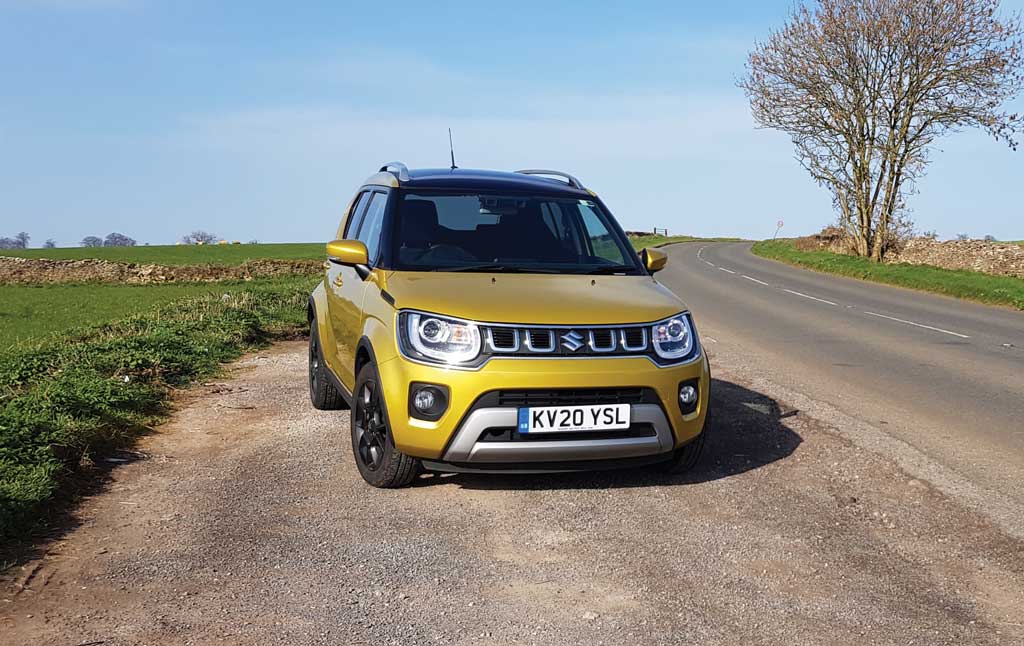
Normally I’ll reach for the bucket and sponge when I need to wash a car, but recently a lack of time and enthusiasm for the DIY approach saw me embrace the local jet wash. You know the drill; you spend some money for seven minutes and a little more for 10 minutes. I went for the latter, but could’ve saved myself a few quid as the Suzuki Ignis’ small size ensured that I was done in a fraction of the time of a regular car. That list of ‘why I like small cars’ just keeps getting longer.
The day the Ignis arrived seems like an age away now, although I do remember thinking that the weekly supermarket shop might be a struggle judging by the size of the car’s boot. Being the eternal pessimist, I even flipped the rear seats forward in anticipation for my first trip. I needn’t have bothered; even now I can confidently get four big bags in the boot without altering the rear seating layout. Transporting my bike would likely require more planning, and maybe a little swearing. But I’d be wanting a bigger car if that was to be a regular occurrence.
I wouldn’t be able to smugly navigate country lanes without fearing for the safety of the car’s door mirrors if I went up a size, though. Having spent a lot of time in rural parts lately, I’ve been reminded of exactly why the Ignis is such a great tool for country dwellers. Close passes by inconsiderate oncoming traffic on narrow lanes isn’t an issue for me, and the lofty driving position allows me to see ahead over low hedges and walls for better forward visibility. And when the Tarmac runs out, I’ve got that all-wheel drive system to keep me out of trouble. Heck, even mud-covered regular roads don’t scare me anymore.
Motorways remain the Ignis’ kryptonite, though. For the sake of my hearing (engine noise) and wallet (increased fuel consumption), I’ve tried to avoid motorways as much as possible. When I do take the plunge, I’ve mostly ignored the car’s cruise control – it’s easy to operate but slow to react to performance-sapping hills. Thank goodness this human is still better able at maintaining a steady speed without losing concentration.
And despite being an Android Auto fanboy, I’ve clearly lapsed and started to embrace Suzuki’s own infotainment system. The DAB radio has always been a solid performer, but now I’m starting to appreciate the navigation features more. The chunky graphics are a world away from Google’s stark interpretation of the world, and you lose the Silicon Valley giant’s superior traffic information and voice control, but the upside is not having to always connect your phone for each journey. Plus, with both main cupholders occupied, stashing your phone somewhere safe is a challenge. It’s not ideal even minus the cups, as the cubby space isn’t quite large enough to accommodate the latest generation of supersized smartphones.
Speaking of size, all that ambling around the countryside has done wonders for the Suzuki’s fuel economy. Not having to push the car’s small engine too hard has paid off this month. Factor in some cheeky coasting to add to the car’s energy recovery system, and I’m pleased with being able to eke out more fuel from the tank than usual.
Date arrived 26th October 2020
Mileage 5,010
Economy (WLTP combined) 51.9mpg
Economy (On test) 53.9mpg
© Motorworld Media 2023
Registered Office: 4 Capricorn Centre, Cranes Farm Road, Basildon, Essex. SS14 3JJ
Company Number: 8818356
Website designed by Steve Dawson